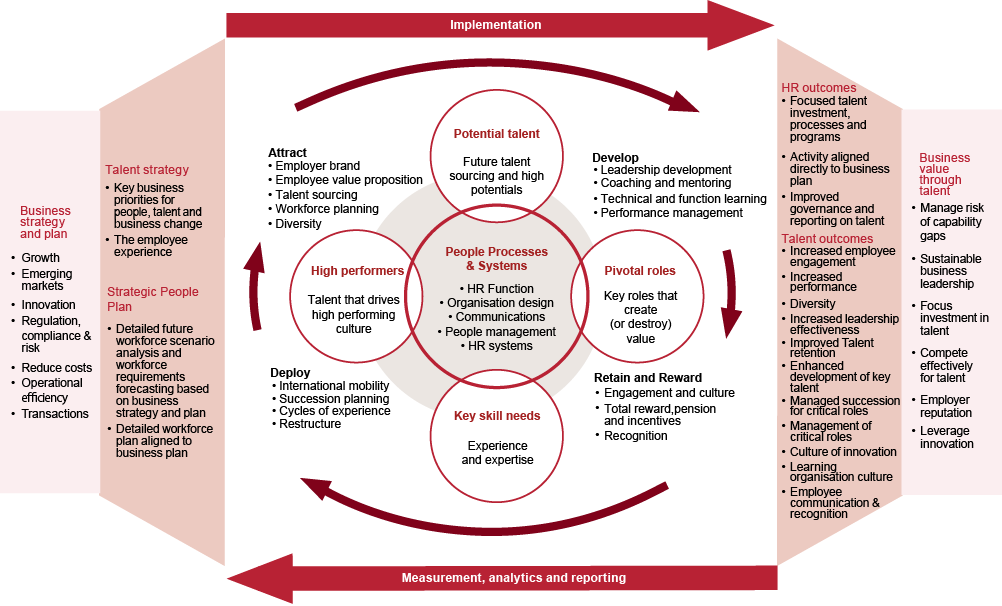{{item.title}}
{{item.text}}

{{item.text}}
An effective Talent Management strategy ensures that an organization has the people and skills, now and in the future, necessary to achieve its business strategy. Talent Management has changed significantly from a traditional siloed definition owned by the HR function to become a critical business issue led and owned by the Executive Team and CEO.
Organizations today face a dynamic business climate with a shrinking pool of qualified talent. To stay ahead of the rapid pace of change, organizations must proactively assess, plan, develop and deploy talent to assume leadership and pivotal roles.
Many companies in the financial industries are experiencing the same leadership development pain points:
A tiered future-oriented leadership development strategy is linked to the organization’s strategy and provides development paths based on a leader’s experience levels and competencies.
The leadership development program should be designed to embed key values and principles to drive business results.
Offering a suite of learning opportunities, which blends on-the-job experiences with formal and informal learning, builds the strongest leadership capabilities.
Our leadership development approach is based on our established training methodology, which provides the rigor to deliver this program, the creativity to make it inspiring, and the performance focus to drive behavioral change.
To realize the full benefits of leadership development, it is essential to reinforce a continuous-learning and knowledge-sharing mindset.
Studies show that investments in leadership development have a direct positive impact on the following four organizational facets:
Organizations with high scores for their investments in human capital delivered stock market returns that were five times higher than that of companies with less emphasis on human capital.
Companies with strategic approaches to leadership development are:
67% more effective at increasing the engagement, retention and teamwork of leaders.
When facing changes in the business environment, 86% of companies with strategic leadership development programs are able to respond rapidly, compared with just 52% of companies with less mature leadership programs.
Building a leadership pipeline through leadership development, continuous learning and comprehensive succession management proactively addresses the demands of an organization's changing workforce − ensuring the right people are in right roles at the right time.
{{item.text}}

{{item.text}}
